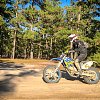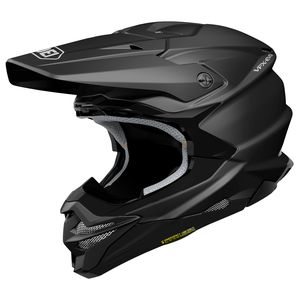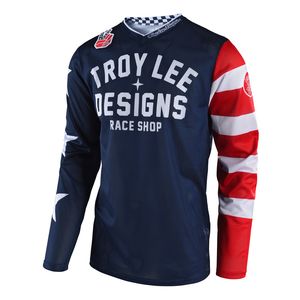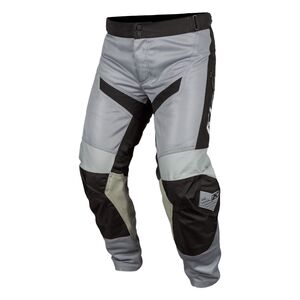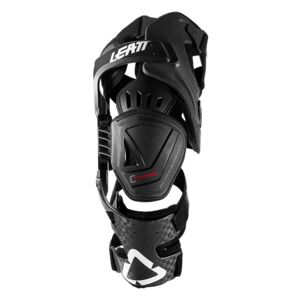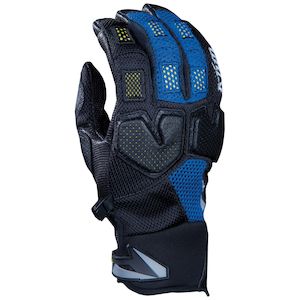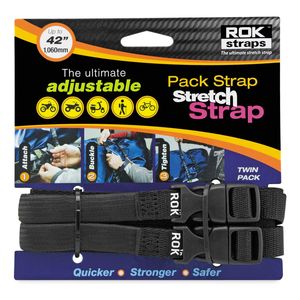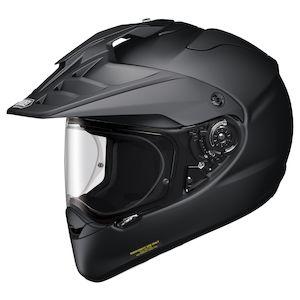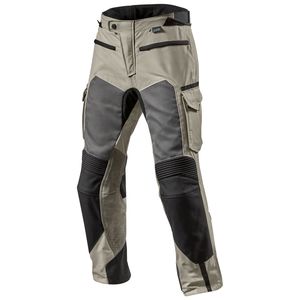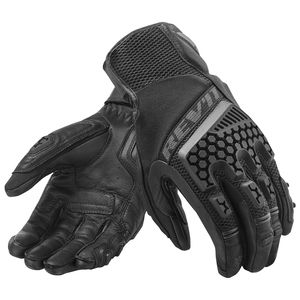My friends and I sat in the packed banquet hall, silently shooting glances across the table at one another. The speaker — we’ll call him “Stan” — was talking about the current state of the motorcycle industry.
It was the same negative drivel we’ve been hearing for 10 years: The old guard is aging out and not enough young blood is joining the ranks. As everyone at our table was in their late 20s to mid-30s, we felt a bit… overlooked.
The main problem I have with this conversation is that it’s usually not followed by any real suggestions for a solution. I mean come on; these are motorcycles we’re talking about, not dentist appointments or deciphering the most recent tax codes. If we can’t get people interested in the excitement of two wheels, a handlebar, and an engine, then we deserve whatever impending doom is heading our way.
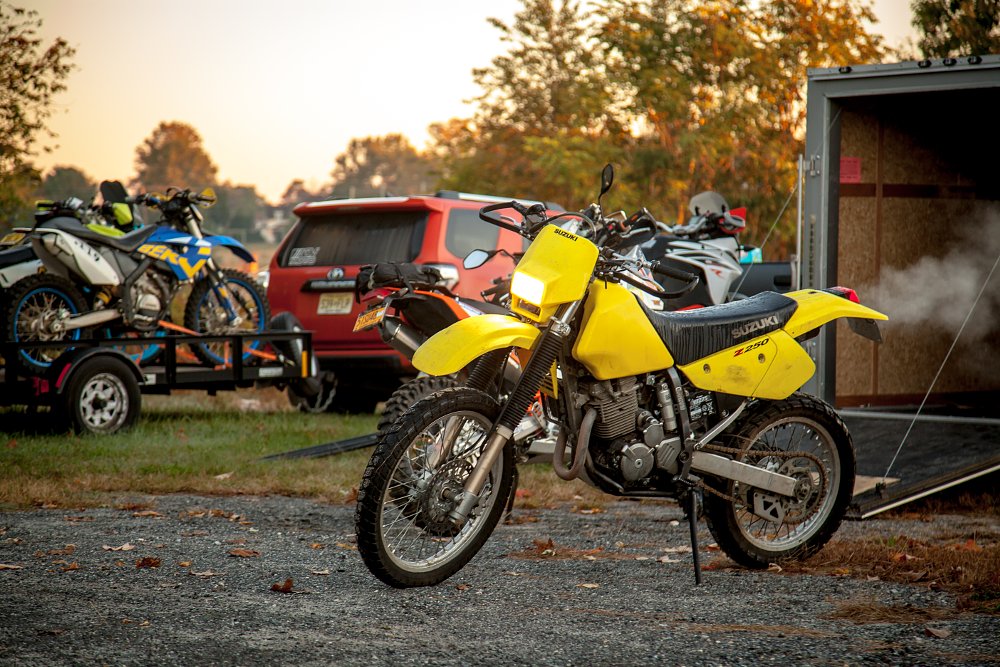
The $15,000 question, the $1,000 answer
Lemmy made a really great point in his recent Gold Wing review: “The cost of them (motorcycles) is relatively unchanged when inflation is accounted for. The largest difference is the lack of wage growth…. bikes aren’t too expensive. Riders' (and non-riders') rate of pay simply never kept pace with the inflation.”
People have less money to spend on items they deem less important, or rather, whose importance has yet to be established. That, and you can also buy a brand new car in this country for around $15K. That makes it hard to rationalize dropping that kind of coin on a new motorcycle if you’re not already invested in the sport. Therefore, the question becomes, how do you get folks invested to begin with?
Take cost out of the equation.
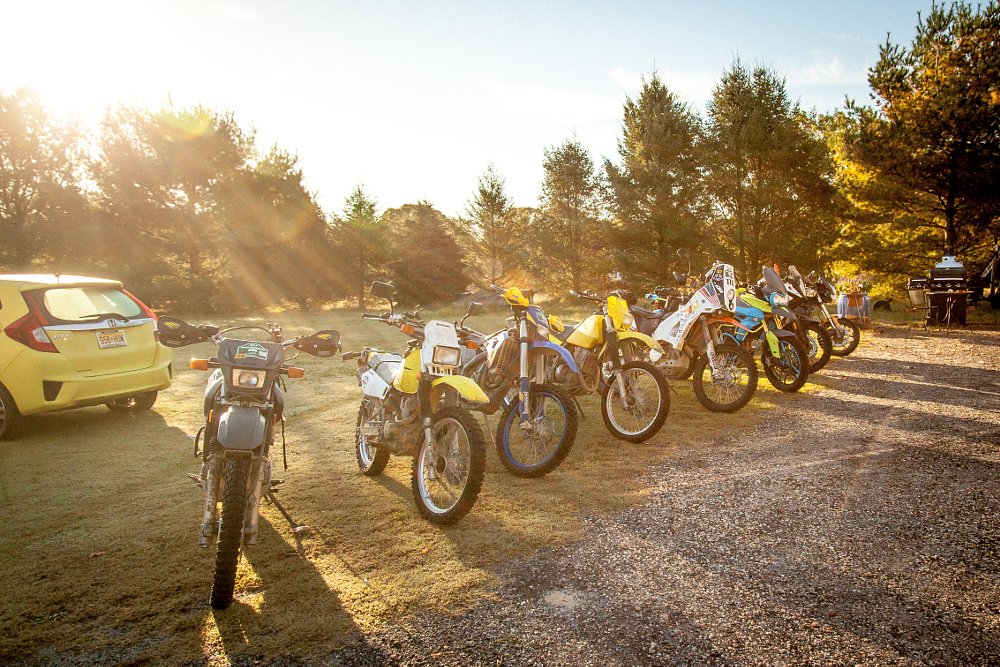
Do you need a $15,000 motorcycle to have a good time? Hell, do you even need a new bike? If our goal is simply to get people invested in motorcycling, we need to start with the path of least resistance. So what is that magic number?
My partner-in-off-road-crime Steve Kamrad and I discussed this in depth over many a night of drinking in the months leading up to this year’s Pine Barrens 500, a three-day adventure bike rally in the wilds of New Jersey. We finally settled on $1,000. Then, we decided to test our theory.

The plan
I feel the need to let you know that Steve wasn’t happy with me when we started this. “I work my ass off for my money,” he argued. “I then use that money to buy a kick ass machine, and now you want me to buy a $1,000 piece of shit and ride that instead??”
Precisely, Steven.
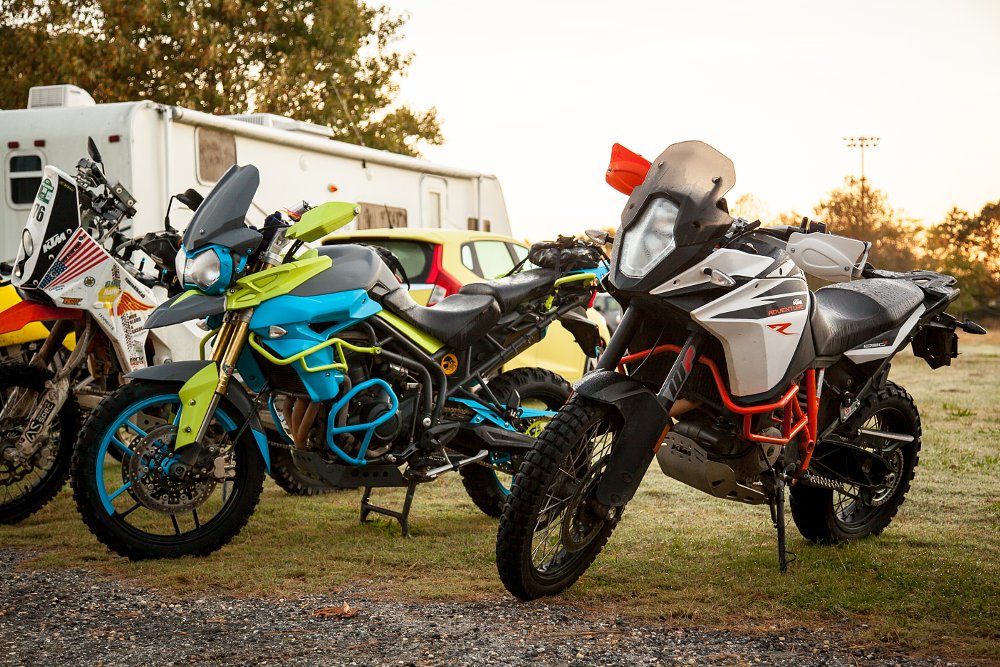
His Triumph Tiger would stay behind at camp, parked right next to my new KTM 1090 Adventure R. Our main mounts would sit out the first of the three days. Instead, we would spend that day piloting whatever street-legal, dual-sport $1,000 would buy us.
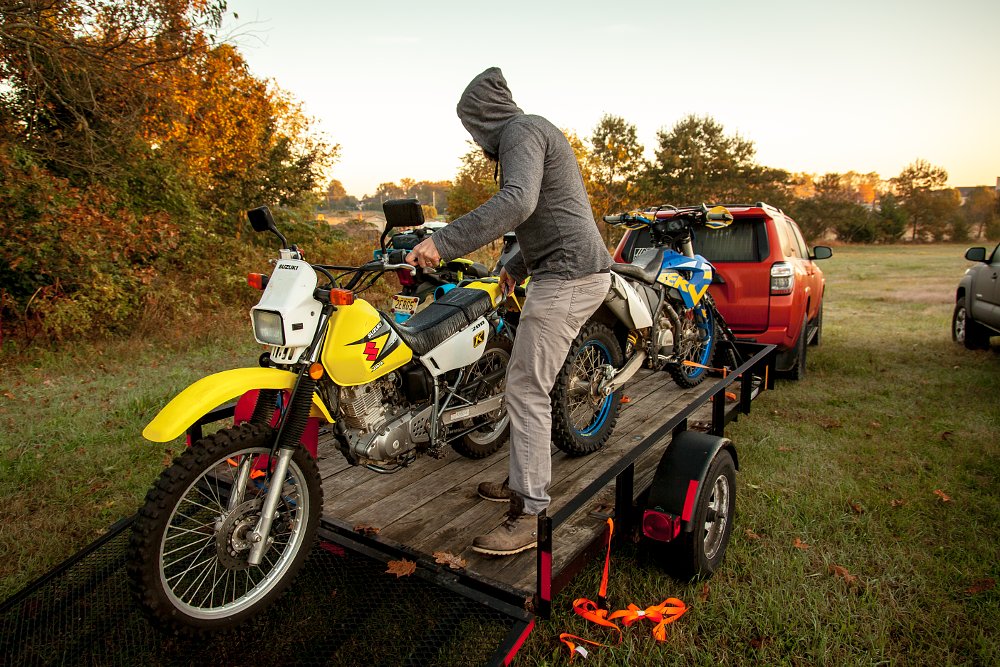
For Steve’s investment of $800 he ended up with a Suzuki DR200SE. With the leftover cash, he invested in a can of carburetor cleaner and a set of cheap knobby tires. I ended up finding a Suzuki DR-Z250 that had been titled and plated in South Dakota. As I maxed out my investment, blowing it all on the bike, I was forced to compete using the tires it came with: Shinko 705s. Not exactly anyone’s first choice for spending an entire day in the sand.
The last step was to enlist a few of our friends. Mani "The Tall Terror" Kalidasa, who stands at six feet, eight inches in boots, left his modified KTM 1190 Adventure R at the hotel, opting instead for his girlfriend’s Suzuki DR650. Steve’s wife, Amelia, was on her Husaberg 390, our pal Fred had another DR650, and Ryan “One Wheel” Wheatley had a tattered Kawasaki Versys 650 that couldn't possibly be worth more than $1,000. The most expensive bike in our group, a KTM 690 Enduro, belonged to Will Scharvogel, who was helping us with some camera work.
With our crew in place, we set out to see how far these little bikes would take us.
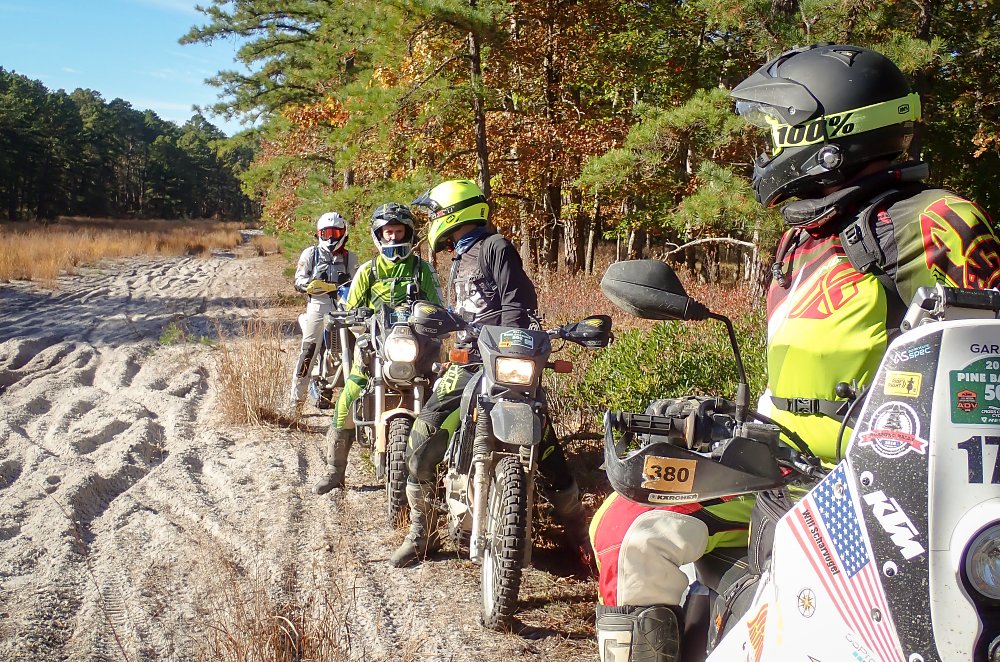
The ride
The first day of the event was scheduled to be about 140 miles. Considering we had done nothing to maintain these bikes (I literally picked mine up the night before the event), that number seemed optimistic.
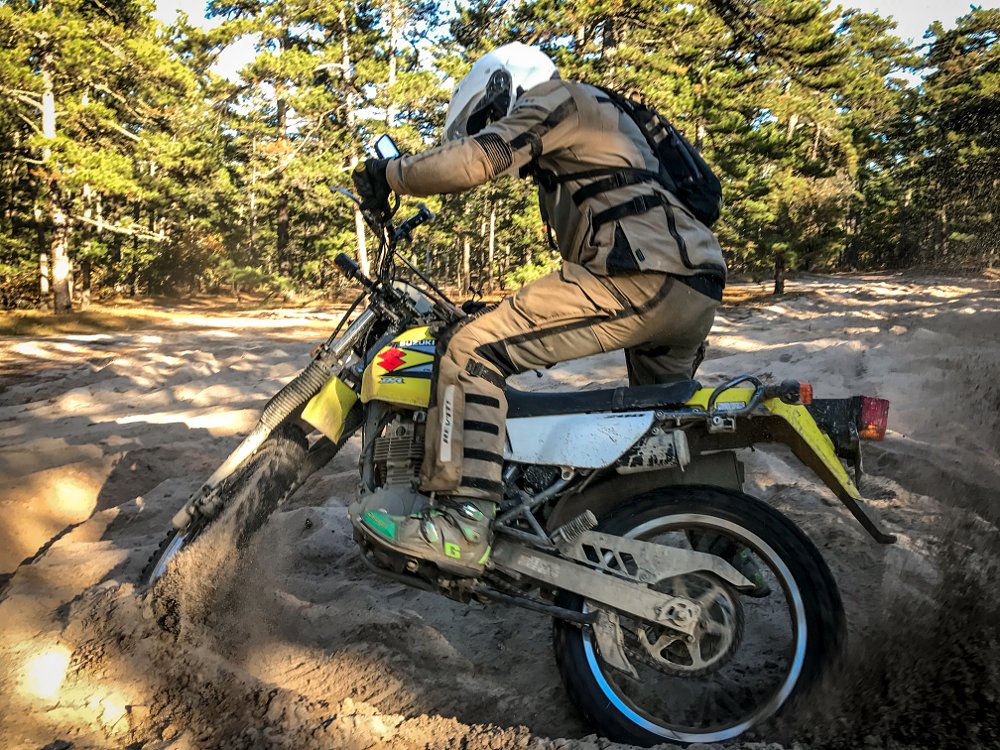
Anticipating possible mechanical issues, our goal was less about mileage and more about capitalizing on the amount of fun that could be squeezed out of these bargain beaters. Steve was still busy promising me he wasn’t going to have any fun when we headed out at 8:30 a.m. I just rolled my eyes.
I was much more positive, having a blast slipping and sliding through the sand. Even after reducing tire pressure to the low-teens, the 705s provided as much grip as a greased pig in a hog-wrestling competition. With the lack of traction, I had to focus on keeping my speed up. If I slowed down, or came to a stop, getting started again was a bit of a struggle.
Steve, on the other hand, was bouncing over whoops like he was riding a pogo stick.
“My tire selection was my best decision heading into this,” he said glaring at me through his goggles. “Letting you talk me into riding this bike at all was my worst.” I doubt the engineers at Suzuki had envisioned a man of Steve’s size (XL) and weight (heavy) full-throttling this little bike down whooped-out sections of trail.
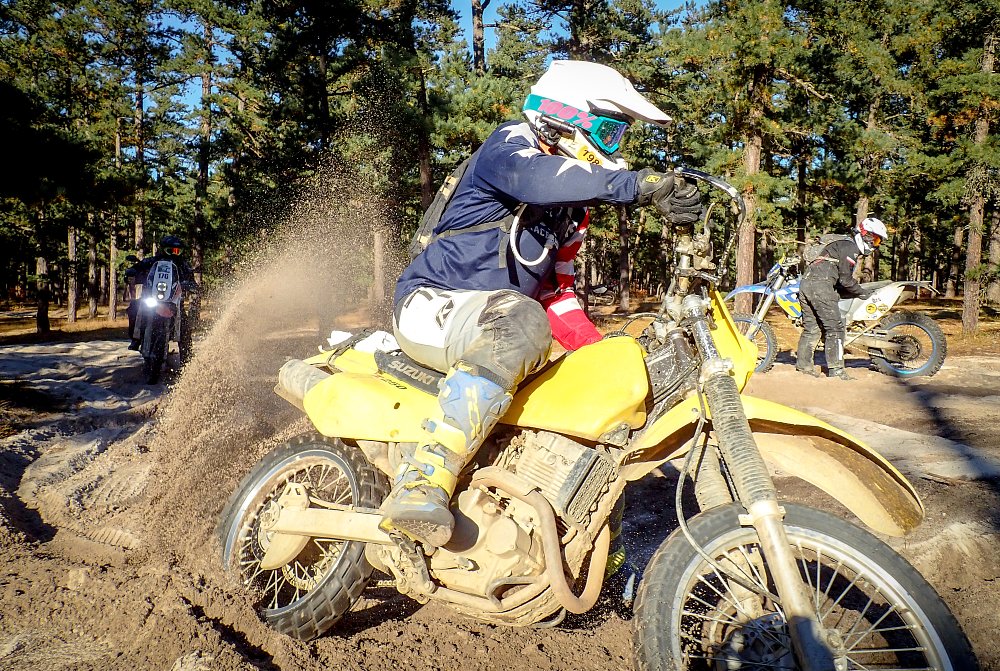
After a few miles, we started to figure out our respective machines. Unlike our larger adventure mounts, which prefer to be ridden in a standing position, the smaller Suzukis were better leveraged in a seated position. Steve and I came to adventure riding from a street background, so it’s impressive to watch guys like Mike Lafferty approach big bikes as if they were racing enduros: more time in the saddle than standing. But these little bikes served as the perfect educational tool for teaching a different approach to off-road riding.
By the time we stopped for lunch, everyone was in a great mood. Hell, even Steve was laughing. He learned he could use the lack of suspension damping to jump over everything in his path. We were picking up really bad habits and joked that we were sure to kill ourselves if we approached our big bikes in the same fashion.
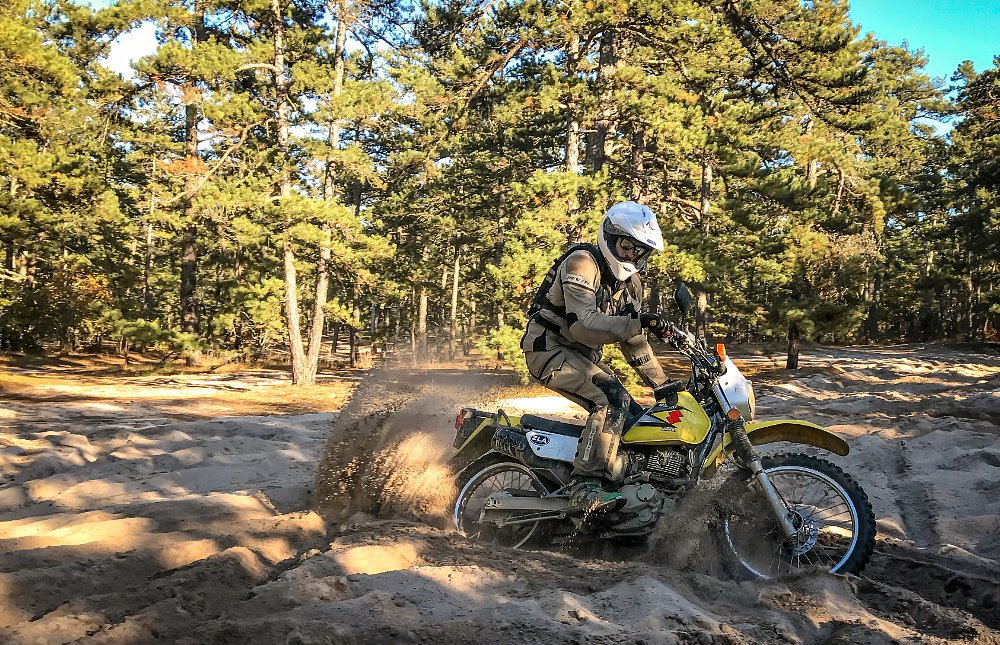
The little Suzukis were almost too forgiving. Too much throttle input? Who cares? It’s hard to hurt yourself when you’re attempting to tame 15 Shetland ponies as opposed to a herd of a hundred Thoroughbreds. Choose the wrong line? No problem. Just roll right through and kick the bike upright if things start going sideways. Sure, you can do that with an adventure bike as well, but you’re running 50-50 odds of a broken femur.
The only real mechanical problem of the day was a throttle plate in my carburetor that liked to stick open. When I came to a stop it sounded like I was preparing for a race launch with the engine screaming at the top of its lungs while onlookers stared at me like I was intentionally acting like an asshole (It was a fair assumption on their part). A few blips of the throttle usually cleared things up.
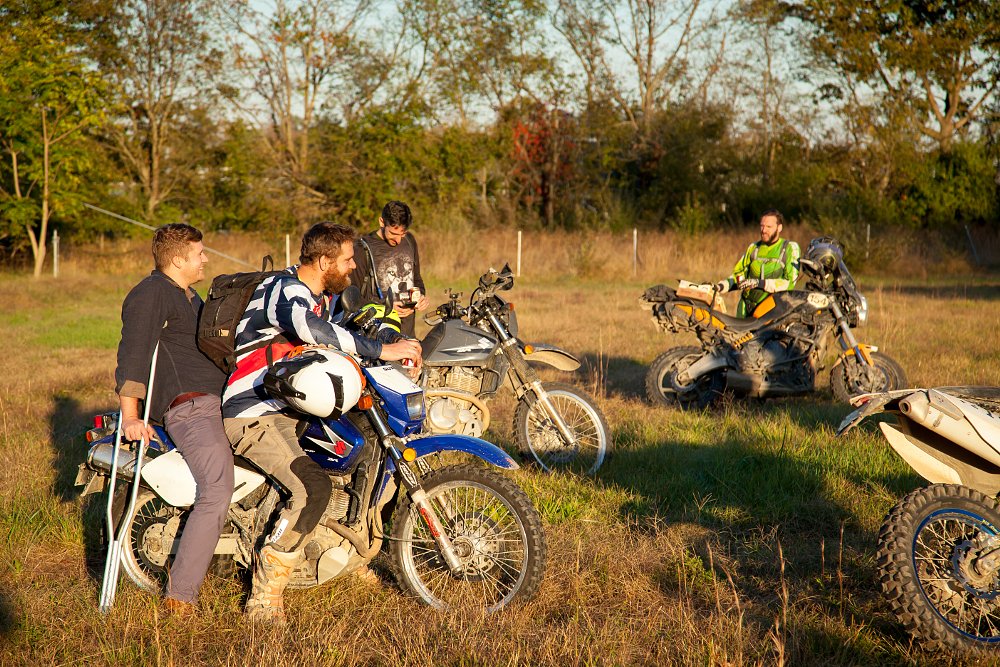
We pulled into the grassy field behind the house we rented for the event, cracked some beers, and began to discuss our thoughts. What had we learned?
The solution
We should start out by acknowledging that we cheated a little bit. For starters we didn’t include gear in the $1,000 number, and those with a keen eye will note that Steve and I are each wearing more than a grand's worth of gear. But there are cheaper options out there that will still keep you safe when getting started. The second thing that probably comes to mind is that these bikes aren’t technically adventure bikes. They’re just beat-up dual-sports, the smaller cousins to the ADV craze. But who's to say what you can or cannot have an adventure on? (If I catch anyone commenting on these two facts, I’ll know who didn’t read the article in its entirety.)
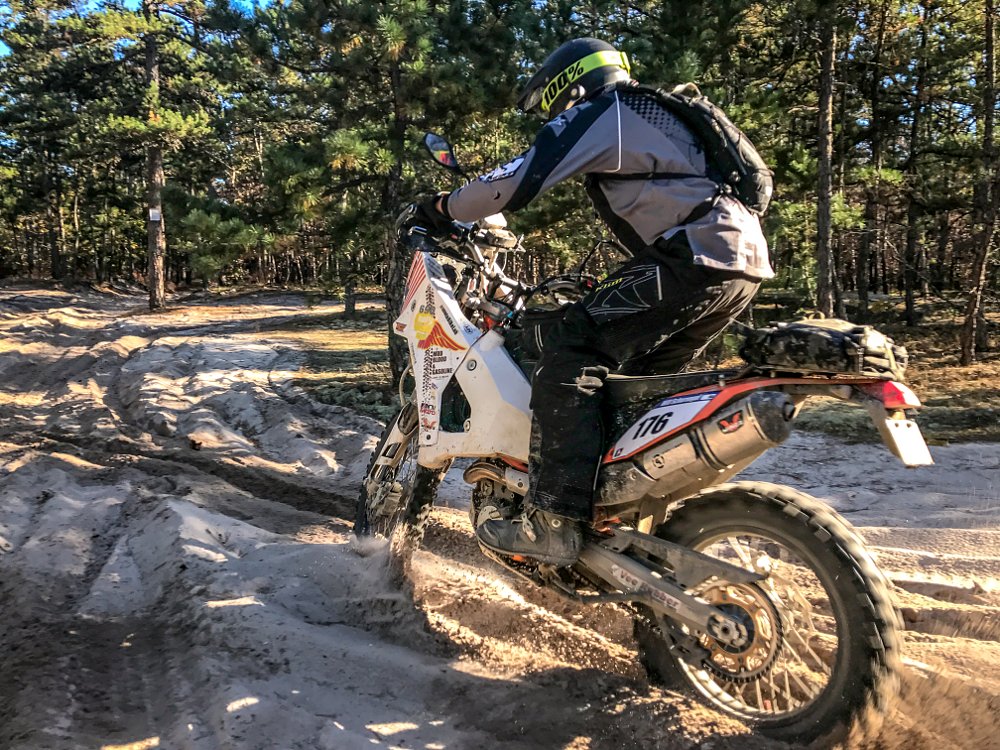
If part of the current problem with motorcycling lies in the cost of entry, than we need to reduce that barrier and let more people in on our secret: motorcycling is fun! Our thousand-dollar, sandblasting steeds provided more smiles, more giggles, more back-patting moments of triumph than we had the right to expect. We laughed, passed guys on big bikes, ate ice cream, explored nature, enjoyed our friends, and made new ones. These are nothing more than big bicycles with an engine replacing the pedals, and who doesn’t love riding a bike?
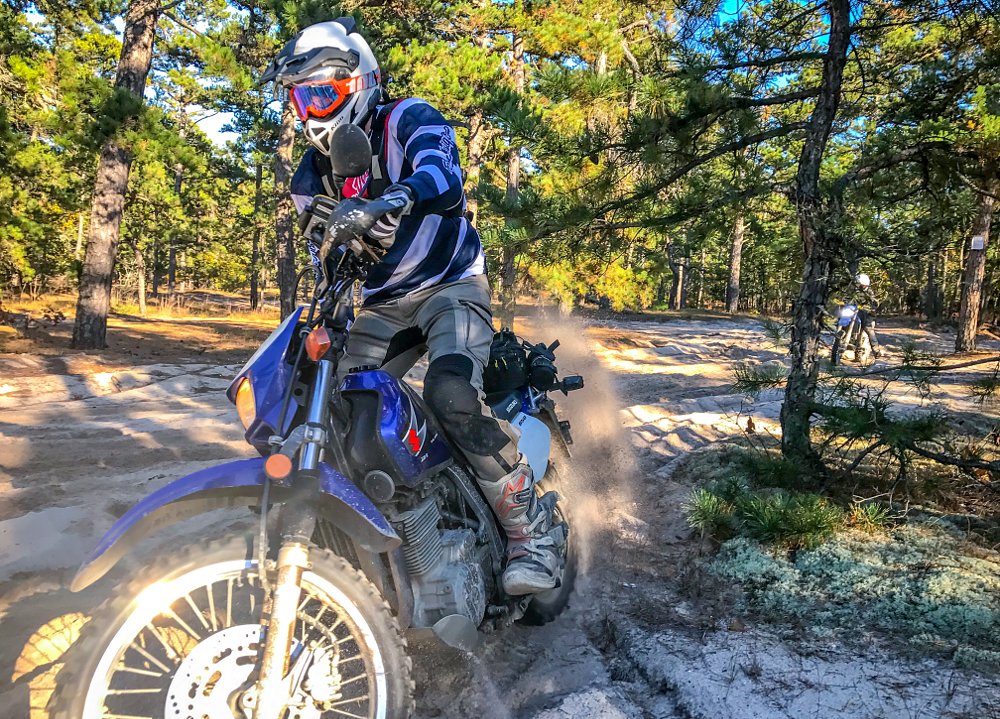
Is this solution going to work for everyone? No way. If you’re not mechanically inclined, a $1,000 used motorcycle could potentially leave you frustrated. If you have long distances to travel, these particular bikes will leave you saddle sore. But if you're looking to dip your toe into the world of two wheels without a huge investment, both of these bikes will get you into the club.
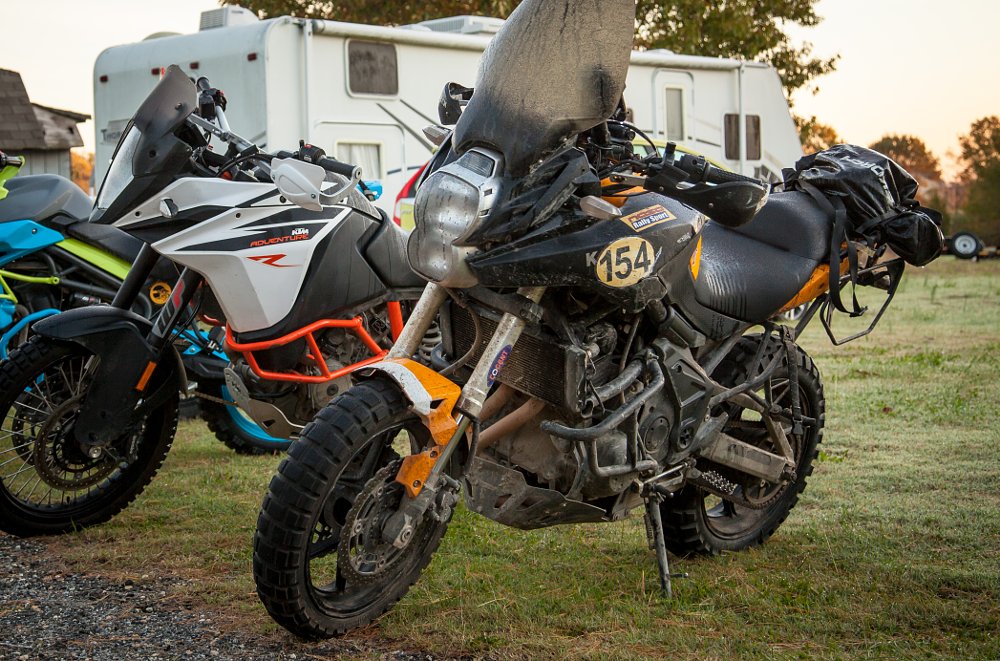
My main point is that it is up to all of us — the manufacturers, the dealers, the magazines, the YouTube channels, the online retailers, as well as you, the dedicated enthusiast — to get people involved. Anyone can complain about the problem of declining interest in motorcycles, but those of us who are genuinely passionate about our sport are the ones who can do something about it.
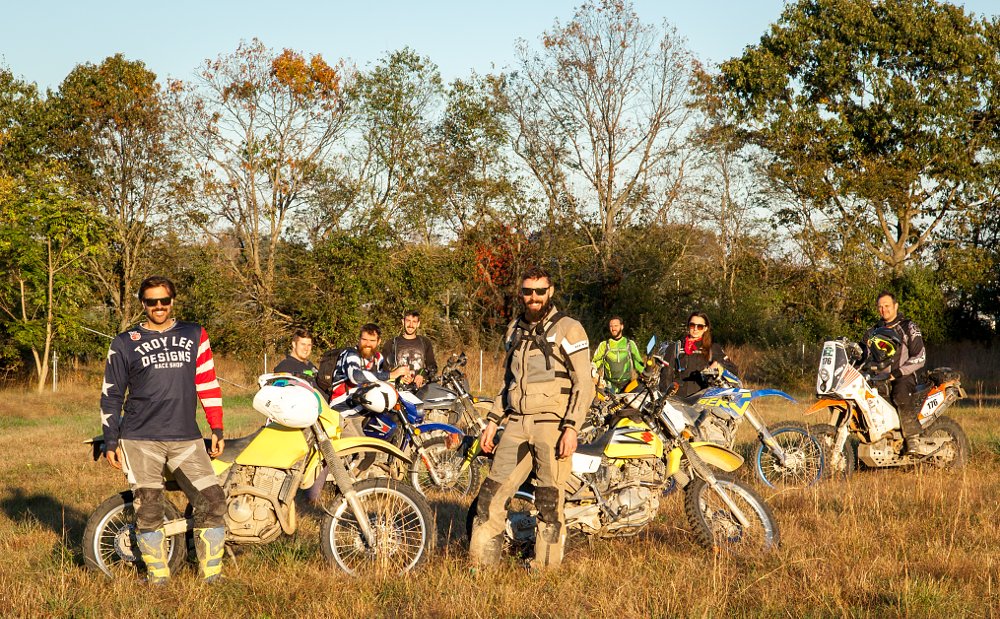
Remember all the way back to the beginning of the article when I was telling you about "Stan," the guy who was lamenting the demise of motorcycling? He owns a dealership. And like any good businessman, he’s gotta make some money to keep food on his table and a roof over his head. I am not faulting him for that. Hell, we need you to buy a helmet or jacket from time to time so we can keep on doing what we're doing.
Before people are going to walk into "Stan's" business and buy a new motorcycle, they have to know how much fun motorcycling can be and get invested in the sport. A thousand-dollar bike might do that.
Steve, for all of his bitching, ended up keeping his DR200SE. Turns out the ol' Grumpy Gus had a change of heart about the lil' thumper. As for my DR-Z250? That bike made its way to Andy Greaser, the newest member of Common Tread’s family. Andy’s wanted to try off-road riding for a while and the little DR-Z is proving to be his gateway drug.
We never had any false illusions that these bikes were going to sway Steve and I to give up our pricier adventure bikes. I spent the remainder of the PB500 remembering how good my KTM is. But it's also an aspirational bike that took me years of sacrifice and hard work to acquire. When it comes to getting new people into motorcycles, there is a lot of fun to be had for $1,000.

 Membership
Membership




